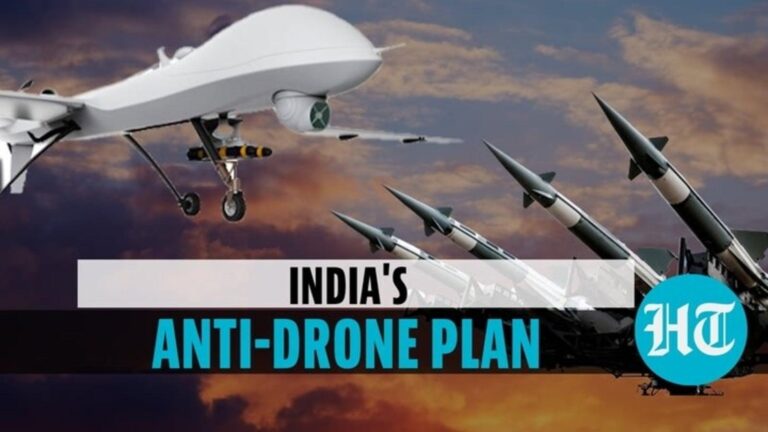Italy’s Ministry of Defense is taking decisive steps to counter the growing threat posed by unmanned aerial vehicles. In a recent announcement, officials revealed that a comprehensive anti-drone plan is currently in development to enhance national security and protect critical infrastructure. As drones become increasingly accessible and sophisticated, the Italian military aims to stay ahead of potential risks through advanced detection and neutralization strategies. This proactive approach highlights Italy’s commitment to addressing emerging challenges in modern warfare and safeguarding its airspace against evolving threats.
Italy’s Ministry of Defense Advances Comprehensive Strategy to Counter Emerging Drone Threats
Italy’s Ministry of Defense has revealed plans to enhance national security by implementing a robust anti-drone strategy designed to counter the growing threats posed by unauthorized and hostile unmanned aerial vehicles. This new initiative focuses on a multi-layered approach combining advanced detection technologies, rapid response measures, and increased inter-agency coordination. Key priorities include:
- Deployment of cutting-edge radar and radio frequency detection systems capable of tracking micro and nano-drones
- Integration of electronic warfare tools to disrupt drone navigation and communication links
- Establishment of dedicated rapid intervention teams trained to neutralize aerial threats in critical zones
- Collaboration with European allies to create a unified drone threat intelligence sharing network
The Ministry has also allocated a significant portion of its annual defense budget toward research and development in counter-drone capabilities. The table below outlines the preliminary budget distribution for the upcoming fiscal year:
| Program Area | Allocated Budget (€ million) | Focus |
|---|---|---|
| Detection Systems | 45 | Advanced radar & RF sensors |
| Electronic Countermeasures | 30 | Jamming & signal disruption |
| Response Teams | 25 | Training & equipment |
| Inter-Agency Coordination | 15 | Intelligence sharing platforms |
Detailed Insights into Italy’s Anti-Drone Technology and Operational Tactics
Italy’s Ministry of Defence is taking a proactive stance in countering the rising threat posed by unmanned aerial systems (UAS). Recognizing drones’ increasing use in both surveillance and offensive operations, Italian authorities are investing in a comprehensive suite of technologies that integrate radar detection, radio frequency jamming, and kinetic interception capabilities. This layered approach reflects a strategic understanding that no single method is sufficient to neutralize diverse drone threats ranging from low-cost commercial models to sophisticated military-grade UAVs.
Key components of Italy’s evolving anti-drone tactics include:
- Multi-sensor detection platforms: Combining radar, electro-optical, and infrared sensors to ensure 24/7 aerial surveillance with high accuracy.
- Signal disruption systems: Employing adaptive jamming frequencies to disable drone communication and navigation controls without affecting civilian networks.
- Rapid response units: Equipped with drones designed to intercept or capture hostile UAVs physically.
| Technology | Main Use | Operational Advantage |
|---|---|---|
| Radar-Infrared Fusion | Enhanced Detection | Improved drone identification in complex environments |
| Frequency Jamming Suite | Communication Disruption | Customizable to different drone models and frequencies |
| Kinetic Interceptors | Neutralization | Physical capture or destruction of hostile drones |
These concerted efforts are complemented by rigorous training protocols for special units tasked with rapid deployment and drone threat assessment. Emphasis is placed on maintaining operational fluidity between detection and neutralization phases, enabling swift, adaptable responses to evolving aerial threats. By integrating technological innovation with tactical expertise, Italy is setting a new standard for anti-drone defense readiness within NATO frameworks.
Experts Recommend Enhanced Collaboration and Regulatory Frameworks to Strengthen National Defense
In response to the growing threat posed by unmanned aerial systems, defense authorities and industry experts emphasize the need for a multi-layered approach combining technological innovation with robust policy-making. Coordination across military branches, private sector partners, and international allies is deemed essential to effectively counter evolving drone tactics. Experts advocate for establishing dedicated platforms to share intelligence and facilitate joint training exercises, ensuring rapid adaptability against emerging threats.
Key areas identified for bolstering national security include:
- Development of interoperable detection and neutralization technologies
- Creation of unified regulations governing drone use and incident response
- Investment in research focusing on artificial intelligence and electronic warfare capabilities
- Enhanced legal frameworks supporting swift prosecution in unlawful drone activities
| Collaboration Focus | Expected Outcome |
|---|---|
| Interagency data sharing | Faster threat detection and response coordination |
| Industry-government partnerships | Accelerated deployment of counter-drone systems |
| International regulatory alignment | Unified defense standards and cross-border cooperation |
The Way Forward
As Italy’s Ministry of Defense moves forward with its anti-drone strategy, the initiative underscores the growing recognition of unmanned aerial threats in modern security landscapes. With challenges ranging from surveillance to potential attacks, the development of comprehensive countermeasures will be critical to safeguarding national infrastructure and military assets. Stay tuned as further details emerge on how Italy plans to navigate this evolving technological battleground.




